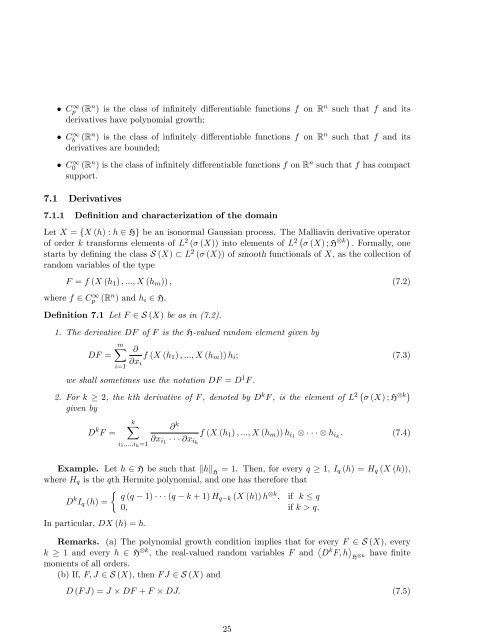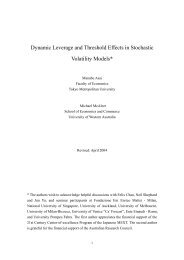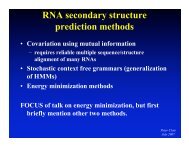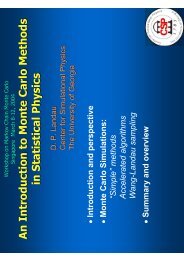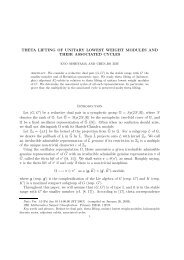Stein's method, Malliavin calculus and infinite-dimensional Gaussian
Stein's method, Malliavin calculus and infinite-dimensional Gaussian
Stein's method, Malliavin calculus and infinite-dimensional Gaussian
You also want an ePaper? Increase the reach of your titles
YUMPU automatically turns print PDFs into web optimized ePapers that Google loves.
Cp<br />
1 (R n ) is the class of in…nitely di¤erentiable functions f on R n such that f <strong>and</strong> its<br />
derivatives have polynomial growth;<br />
Cb<br />
1 (R n ) is the class of in…nitely di¤erentiable functions f on R n such that f <strong>and</strong> its<br />
derivatives are bounded;<br />
C0<br />
1 (Rn ) is the class of in…nitely di¤erentiable functions f on R n such that f has compact<br />
support.<br />
7.1 Derivatives<br />
7.1.1 De…nition <strong>and</strong> characterization of the domain<br />
Let X = fX (h) : h 2 Hg be an isonormal <strong>Gaussian</strong> process. The <strong>Malliavin</strong> derivative operator<br />
of order k transforms elements of L 2 ( (X)) into elements of L 2 (X) ; H k : Formally, one<br />
starts by de…ning the class S (X) L 2 ( (X)) of smooth functionals of X, as the collection of<br />
r<strong>and</strong>om variables of the type<br />
F = f (X (h 1 ) ; :::; X (h m )) , (7.2)<br />
where f 2 C 1 p (R n ) <strong>and</strong> h i 2 H.<br />
De…nition 7.1 Let F 2 S (X) be as in (7.2).<br />
1. The derivative DF of F is the H-valued r<strong>and</strong>om element given by<br />
mX @<br />
DF = f (X (h 1 ) ; :::; X (h m )) h i ; (7.3)<br />
@x i<br />
i=1<br />
we shall sometimes use the notation DF = D 1 F .<br />
2. For k 2, the kth derivative of F , denoted by D k F , is the element of L 2 (X) ; H k<br />
given by<br />
D k F =<br />
kX<br />
i 1 ;:::;i k =1<br />
@ k<br />
@x i1 @x ik<br />
f (X (h 1 ) ; :::; X (h m )) h i1 h ik . (7.4)<br />
Example. Let h 2 H be such that khk H<br />
= 1. Then, for every q 1, I q (h) = H q (X (h)),<br />
where H q is the qth Hermite polynomial, <strong>and</strong> one has therefore that<br />
<br />
D k q (q 1) (q k + 1) Hq<br />
I q (h) =<br />
k (X (h)) h k , if k q<br />
0, if k > q:<br />
In particular, DX (h) = h.<br />
Remarks. (a) The polynomial growth condition implies that for every F 2 S (X), every<br />
k 1 <strong>and</strong> every h 2 H k , the real-valued r<strong>and</strong>om variables F <strong>and</strong> D k F; h have …nite<br />
H k<br />
moments of all orders.<br />
(b) If, F; J 2 S (X), then F J 2 S (X) <strong>and</strong><br />
D (F J) = J DF + F DJ: (7.5)<br />
25


